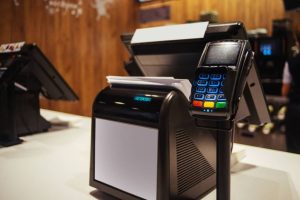With current cloud features, POS machines have become relatively easy to use for both merchants and consumers. Buying and selling goods and services has never been easier, whether you’re at parks, eateries, restaurants, boutiques, gyms, consultation appointments, or even your corner stores.
Despite all the progress made on this front, we still have situations where we have issues.
They’re still prone to fraud, theft, and payment disputes. Other issues such as reclaiming guarantees on products purchased or services acquired and debit without alerts due to network issues between the terminal and the acquiring server.
Because of these, anyone would have good reason to track the location, POS owners’ names, time of transactions, and items purchased. This article will serve as your guide on how to track POS transactions. including POS ID tracking, and POS number tracking.
How to Track POS Transactions – The Steps
Step 1: Visit your bank or contact your bank’s customer care.
For the majority of fraud-related issues, it is best to contact your bank rather than unknown third-party entities, as this ensures the safety and protection of your information. Other people may take advantage of the situation to either mislead you, dupe you, erase proof, or lead you further down the line.
Step 2: Explain the context of the situation.
Be entirely truthful about how the entire transaction or charge came to be. If it was an overcharge on a product, being charged twice for the same product, if you never purchased anything but got charged anyway, or if you suspect that it may be a fraudulent transaction.
Step 3: Provide proof (of payment or charge).
Often, if enabled, for every charge on your debit/credit card, you get some form of feedback, either via mail or text, usually automated. This mail or text contains solid information as to when, where, and how the transaction took place.
Read also: Best Free Online and Offline POS Software to Download for Restaurants and Small Businesses
Step 4: Tracked through debit details.
These details, as highlighted above, in this particular format;
Amount (3000) deducted at “AvivaI Restaurant” and the balance amount is (11,490) or something close.
Other times, it may come in this format;
Acct no: 1XXXXXXXXXX1
DT:11/11/2020:4:22:00PM (Indicating date and time of the transaction)
MC Loc POS Prch-605108078181–E-SET (POS identification number and location)
DR Amt:3,000.00 (Amount debited)
Bal:11,490
REF:1190882962 (Transaction reference number)
Read also: Restaurant POS System Prices
Use this as proof if the transaction was done without your authorization, but it is important to know that whoever carried out this transaction knew what your PIN was, so the perpetrator may be closer to home than you think.
This can be used to track down wherever it was done and whoever did it if the merchant kept proper records.
If it’s for an overcharge or refund, you can get your money back as long as you have the receipt and have a genuine reason.
Read also: Zenith Bank POS Agent: How to Become One
Step 5: The Bank contacts the merchant.
For POS systems, the payment gateway works bank to bank. Also, each POS is associated with a registered company. It requires account transfer (To and Fro) and server validation. This way, data such as time, date, transaction number, phone number, email address, transfer location.
The bank or issuing card authority can then reverse the payment based on the cardholder’s request if the request is a valid one.
For merchants.
Most POS systems are assumed to have met global industry standards before use.
Examples of such standards are Payment Application Data Security Standard (PA DSS); Payment Card Industry Pin Entry Device (PCI PED); Payment Card Industry Data Security Standard PCI DSS; and Data Encryption Standards (Triple DES).
Also, the hardware and infrastructure must comply with the minimum EMV requirements. The reason for this?
Fraud can be easily curbed or traced. Also serves as an efficiency check.
It is important as a merchant to realize that you will be held accountable for fraud with the card (transactions) arising from its negligence and collaboration with fraudsters, among others.
So, it is highly important for both the hardware and software to undergo routine checks for lapses or irregularities. Examples of issues to look out for are connectivity issues, inaccurate reporting and documentation, and security.
How to track POS Machine transactions in Nigeria (Opay, Palmpay, Moniepoint)
If you live in Nigeria, one of the best ways to track POS transactions will be going through your banks. The banks will often request when the POS transaction was made; they will also request any transaction numbers that will probably aid the investigation.
As a rule of thumb, you’ll need to go to your own banks if you want to track a POS transaction.
Read also: Where to Buy Offline POS Machine in Nigeria




